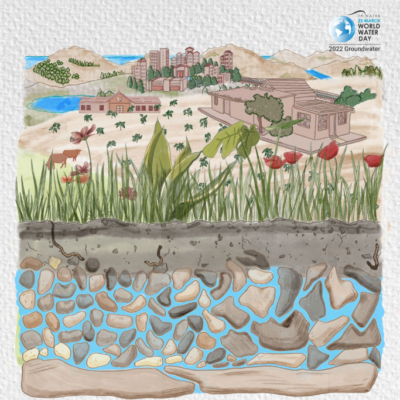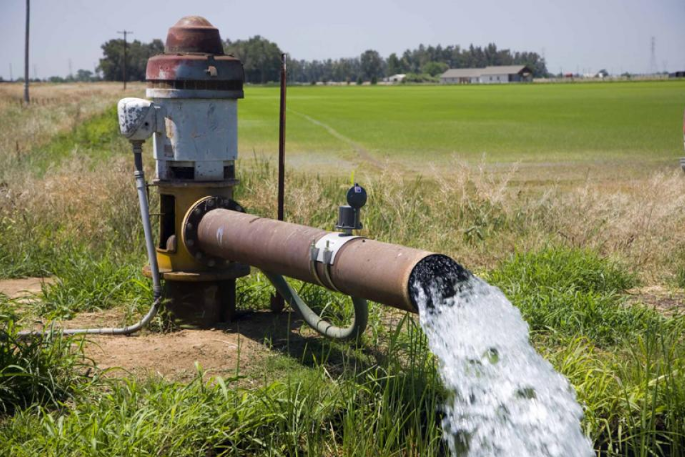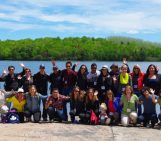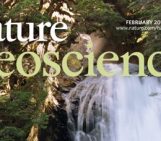
Announcing a new series of articles By Swamini Khurana
Integrated Water Resources Management (IWRM) is the coordinated management of natural resources including both water and land. IWRM informs a sustainable path to development without leaving a holistic view of ecosystems out of the context. Thus, it brings together professionals from a wide variety of professional backgrounds to ensure this holistic development and management of water resources.
Shining a spotlight on best practices for water resource management enables practitioners worldwide to be exposed to diverse value systems and approaches to generate innovative solutions for IWRM (1). However, over the past 2-3 decades, IWRM has primarily focused on surface water resources, with only a few case studies exploring the sustainable use of groundwater resources. Sustainability here means both volume or rate of abstraction of groundwater as well as the quality of groundwater. Neglecting groundwater from the IWRM framework is highly inadvisable since groundwater is the largest source of available freshwater on Earth (2). It is extensively used by a wide variety of sectors, from agriculture to municipal and industry. Being a “hidden” resource, monitoring of groundwater quality and quantity has been somewhat challenging. Thus, while it should clearly be holding center stage in IWRM conversations, it is often ignored.
To bring the focus back to groundwater, we envision a new series of articles collecting good practices on groundwater management from diverse regions and communities to add to the seed bank of “Good Anthropocene”. We aim to raise awareness about relevant initiatives and organizations involved, to which readers can reach out to if they are interested in building capacity to address similar concerns in their focus area/region. We welcome contributions from our readers if they are aware of any initiative which fits with this topic. Contributions may be in any form, ranging from raising awareness among the editorial team about a success story through a reference to an independent article contribution. If you would like to share a story, please email swamini.khurana@natgeo.su.se and waterundergroundblog@gmail.com. The IGRAC also has an ongoing challenge to make the invisible groundwater visible! The deadline for submissions is 20 November 2022, so go ahead and share how groundwater touches you in your daily life!

Since groundwater monitoring has been challenging, groundwater resources are over-exploited globally. The limitless abstraction of groundwater has resulted in lowering water table in numerous aquifers (3). Historically, industrial establishments have also chosen to pump their hazardous waste into the ground, rather than treat it appropriately prior to safe disposal. This has resulted in contamination of large aquifers, with groundwater use affected for several miles downgradient from the source of the contamination. Similarly, solid hazardous waste stored without protection on the ground also leaches into the groundwater, subsequently contaminating the entire aquifer. Lastly, excessive fertilization of agricultural land over the last few decades has led to a continental scale nitrate problem in Europe, among many other regions in the world. Eventually, this poor-quality groundwater reaches surface water bodies in the form of Base flow, resulting in further spread of contamination. Alternatively, over-abstracted groundwater fails to reach the receiving surface water body, resulting in drying and dying streams. Thus, it is clear that no IWRM plan can be drawn without taking into consideration the aquifer in that basin.
Few areas/case studies exist describing the incorporation of groundwater resource management in IWRM. Some exist, including Guarini shared between several countries in South America, Southwest Florida, Northern China Plain, and European countries such as Poland and Spain, which display the successful transboundary collaboration to address overexploitation of large aquifers at both the national and the international levels. Check out the Global Water Partnership as a starter resource.
Through this new series of articles, we would like to bring into focus the case studies where groundwater resources were carefully considered in the overall management plan along with surface water resources.
(1) Bennett, E. M., Solan, M., Biggs, R., McPhearson, T., Norström, A. V., Olsson, P., Pereira, L., Peterson, G. D., Raudsepp-Hearne, C., Biermann, F., Carpenter, S. R., Ellis, E. C., Hichert, T., Galaz, V., Lahsen, M., Milkoreit, M., López, B. M., Nicholas, K. A., Preiser, R., … Xu, J. (2016). Bright spots: Seeds of a good Anthropocene. Frontiers in Ecology and the Environment, 14(8), 441–448. JSTOR Journals.
(2) Gleick, P. H., 1996: Water resources. In Encyclopedia of Climate and Weather, ed. by S. H. Schneider, Oxford University Press, New York, vol. 2, pp.817-823.
(3) Huang, Y., Salama, M. S., Krol, M. S., Su, Z., Hoekstra, A. Y., Zeng, Y., and Zhou, Y., 2015:: Estimation of human-induced changes in terrestrial water storage through integration of GRACE satellite detection and hydrological modeling: A case study of the Yangtze River basin, Water Resources Research, 51, pp. 8494-8516, doi: 10.1002/2015WR016923.




